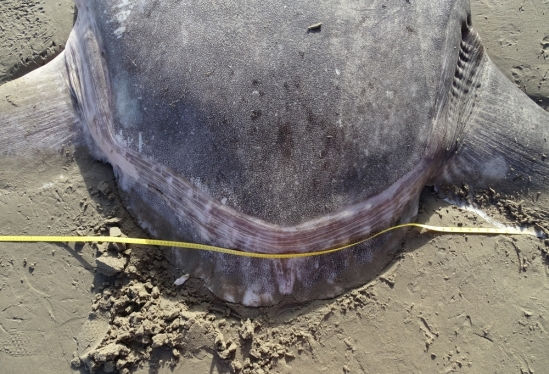Hoodwinked by a Fish - Citizen Science to the Rescue
- NWong
- Mar 9, 2019
- 4 min read

An Ocean Sunfish (Thinkstock Image)
What is science and research driven by? Hypotheses and the underlying data! You can never have enough data, especially in disciplines like population ecology or population genetics. Say for instance you are trying to detect the spread of an invasive insect species, or even watching migratory routes of whales, being on site to collect the data is imperative – otherwise there will be no data to interpret.
The use of citizen science is potentially a fantastic way to gather important data, provided it is collected in the proper manner, that it is credible or that it is easily verifiable. One mechanism citizen scientists are connecting with researchers is iNaturalist. iNaturalist is a citizen science project and online network of naturalists, biologists and citizen scientists, founded on the concept of mapping and sharing observations of biodiversity throughout world. iNaturalist can be accessed via the web or from the field through its mobile apps. Observations recorded with iNaturalist provide valuable open data to scientific research projects, conservation agencies, other organizations, and the public. iNaturalist recently became a joint initiative between the California Academy of Sciences and the National Geographic Society and with such tremendous support will continue to grow as a scientific tool.
In February 2019 an intern of UC Santa Barbara’s Coal Oil Point Reserve noticed a stranded fish that had washed in with the tides. At first glance it was clear that it was an ocean sunfish or Mola Mola which is known to swim the Santa Barbara Channel so no surprise there. The intern notified a reserve coordinator, Jessica Nielsen, who took a look for herself, took some measurements and posted photos on the reserves facebook page. Shortly after Thomas Turner, an associate professor in UC Santa Barbara’s ecology, evolution and marine biology department, scurried down to the beach to see for himself. Turner himself then posted some of his own images to iNaturalist. Further down the chain the iNaturalist post caught the eyes of two fish scientists on the opposite side of the earth.
So now we have basically taken a citizen science observation and escalated this observation data point up the chain. Now enter sunfish expert Marianne Nyegaard, of Murdoch University in Australia and ichthyologist Ralph Foster of the South Australia museum. Looking at the picture on iNaturalist Nyegaard wasn’t not certain about the species. Normally the scale, or denticle, structure of large sunfish serves as a reliable diagnostic to classify down to the ocean sunfish species level. What was the solution? Get better pictures and tissue samples for DNA analysis. Back on the other side of the earth Nielsen and Turner were gung ho to help out, taking photos and mailed tissue samples over to Australia.

Jessica Nielsen, a conservation specialist at Coal Oil Point Reserve, takes tissue samples from the hoodwinker sunfish that
washed up on Sands Beach in February 2019 (Thomas Turner)

This hoodwinker sunfish, or Mola tecta, a species never before documented in the Northern Hemisphere, washed up at Sands
Beach in February 2019 (Thomas Turner)

A closeup of the clavus area — a key diagnostic feature — of the hoodwinker sunfish found in February on Sands Beach,
at Coal Oil Point Reserve (Thomas Turner)

Detailed photographs and measurements, such as this of the hoodwinker's dorsal ossicles, were key to the
identification of Mola tecta (Thomas Turner)
Turns out this Mola was Mola tecta, the hoodwinker sunfish, rare and only recently described in 2017 by Nyegaard herself. It was in fact named the hoodwinker for its elusive nature. M. tecta had never been observed in the Northern Hemisphere; what a discovery! Nyegaard had suspected from the initial photos that is could have been a hoodwinker but being so far out of its known range she was hesitant to call it out. It is unclear how this M. tecta ended up so far from its home in the Southern Hemisphere, but having a positive id is the first step to delving into the why or how.
This is citizen science and iNaturalist at its best – an experienced novice informs an expert, an expert loops in another expert and tadaa!
iNaturalist is an amazing app having used it myself and the app evolving. It includes an automated species identification computer vision tool, called "Computer Vision." Photos can be identified via an artificial intelligence model which has been trained on the large database of the research grade observations on iNaturalist. A broader taxon such as a genus or family is typically provided by the model.
“Without attentive eyes, camera phones and social media, the Australian ichthyologists would have never learned that this fish had just been seen for the first time in the Northern Hemisphere,” said Cris Sandoval, director of Coal Oil Point Reserve. “This type of crowd-sourced science is helping biologists map species in ways we could not have imagined just a few years ago.”





Comments